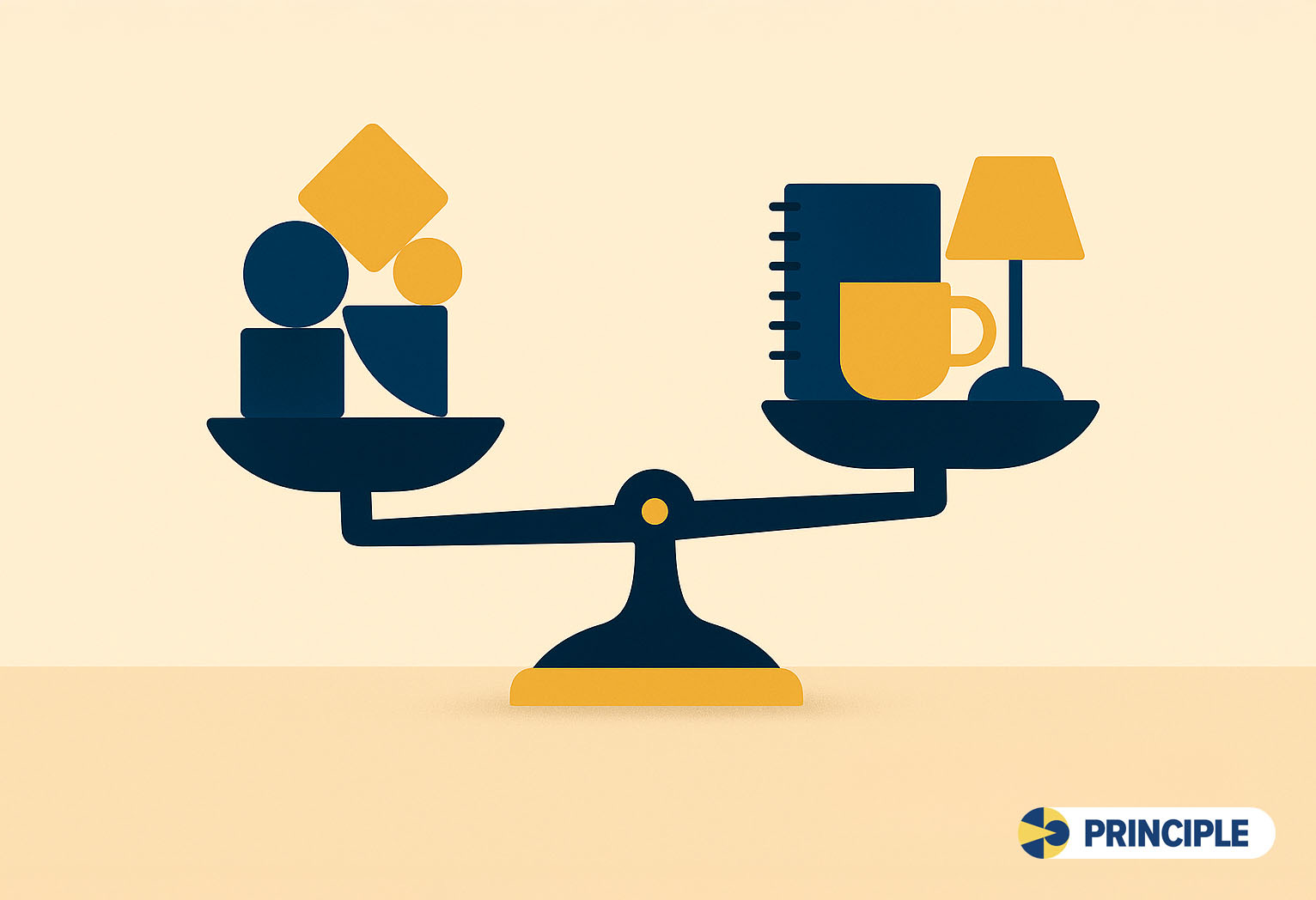Resimplification Is Not Minimalism
It’s not about having less for the sake of less — it’s about having what works.
This is a Principle article — one of the four types you’ll see regularly in Resimplification. Principle articles explain the core ideas that anchor the whole philosophy.
You’ll find other archived articles in categories like Practices, Field Notes, and Signals that you can access from the publication’s main menu.
The Principle
Minimalism is often defined by reduction. That means owning fewer things, cutting back, stripping away until you’re left with only the bare essentials.
Resimplification, on the other hand, isn’t a style or an aesthetic. It’s a practice of continually adjusting your work, life, and commitments so they fit your needs and priorities right now. Sometimes that means doing less. Sometimes it means doing more, but in either case, doing it more intentionally.
A Practical Contrast
Minimalism: Remove most furniture from a room to create open space.
Resimplification: Keep the furniture that serves your daily life and arrange it so the room works better for you.
In other words, minimalism is defined by quantity. Resimplification is defined by fit.
Why the Difference Matters
When people hear “simplify,” they sometimes assume it means “reduce until you can’t anymore.” That can lead to over-cutting — removing tools, systems, or resources that are actually essential.
The Takeaway
Resimplification is about balance. It’s about removing what no longer helps and keeping (or even adding) what does.
Closing Thought
Resimplification isn’t about living with less. It’s about living and working with what’s right.
Have you ever cut something from your life only to realize you needed it back? Share your story in the comments. And be sure to follow us on social media @resimplification.






Many times in life, I have intentionally moved things to the bottom of the priority list or off of it completely, only to find out that it was more important than I thought. Nowadays, I let things organically fall to the bottom or rise to the top and periodically re- evaluate. The reason I do this is that life is not a vacuum and a conscious decision to remove something from my life may be a reaction to the situation at that very moment, rather than what is best for the long-term. I will usually put it aside and allow it to naturally do what it is going to do. Life is not amenable to a Marie Kondo exercise.